The Tetradon Miurus, affectionately known as the Potato Puffer or Congo Puffer, is a distinctive freshwater puffer species distinguished by its potato-like shape and upward-pointing mouth. It is a prevalent choice among the "odd-ball" aquarists due to its unique abilities and traits.
Endemic to Africa's Congo Basin, this freshwater dweller thrives in clear, fast-flowing waters with high oxygen levels. These specific environmental conditions contribute to their unique behavior patterns and revealing their various color adaptations.
One of the most fascinating traits of the Potato Puffer is its mastery of camouflage. It is capable of shifting its colors depending on its mood and surroundings. Furthermore, this species has an aggressive nature and is regarded as an ambush predator, providing another reason besides their potent toxin for their solitary lifestyle.
While the T.miurus is fascinating, it requires special care and attention when keeping it in captivity.
Aquarium for T.miurus should have specific conditions to mimic its natural environment—highly oxygenated water with medium to strong currents, and a sufficient amount of hiding spaces. It is advisable to provide a sand substrate of at least 5 centimeters depth to allow their typical wallowing behavior and give them ample cover.
The recommended tank volume is approximately 72 liters with a minimum footprint of 60 cm by 40 cm, and a height of at least 30 cm. The tank's water parameters should maintain a pH between 6.5-7.5, a temperature of 25-26.5°C, and nitrate level below 15 ppm, among others.
It's important to keep in mind the predatory nature of T.miurus when deciding tankmates. It's generally recommended that the Potato Puffer be kept as a solitary specimen to prevent any unfavorable aggressive encounters.
Feeding the Potato Puffer can be a meticulous task due to their particular series of dietary needs.
A balanced variety of foods like fish meat, shrimp, crustaceans, worms, and insects form a crucial part of their diet. That being said, it is essential to be cautious of thiaminase, an enzyme found in several fish, which can potentially lead to vitamin deficiencies in puffers. Also, live feeder fish are not advised due to the risk of transmitting harmful pathogens.
Generally, the Potato Puffer is a picky eater, and it may take some time for them to accept new foods. One useful trick is to initiate a weaning process by slowly introducing frozen-thawed foods using forceps.
Detailed and conscientious care is the secret to ensuring a healthy life for the Potato Puffer.
With proper care and under ideal conditions, the Potato Puffer can live up to 10 years. They are an unexpected commitment, given their lifespan and specialized care needs.
Considering the fish's waste production, proper filtration and regular water changes are imperatively necessary. Unsurprisingly, the Potato Puffer is a high-maintenance pet. It requires vigilant water quality management and an immaculate tank environment for their well-being.
In conclusion, the Tetraodon miurus, or the Potato Puffer, is a magnificent yet demanding pet, requiring substantial attention and care level. While the journey of caring for the fish can at times be intense, the reward of witnessing their unique behaviors and colorations amidst a faithfully recreated home habitat can indeed make it all worthwhile.
The Boraras brigittae, also known as the Mosquito Rasbora, is a small specie of ray-finned fish, widely admired for its striking appearance and fascinating behaviors. Native to the swamps of South West Borneo, Indonesia, this species exhibits vibrant red bodies with black stripes and a translucent caudal fin, making it a jewel of the freshwater world.
When it comes to names, the genus Boraras is an anagram of Rasbora communicating the switched ratio of abdominal and caudal vertebrae in this genus, while the species name, brigittae, draws its origin from the wife of the author who officially described the species.
Nestled under the Order Cypriniformes and the Family Cyprinidae, Boraras brigittae find its siblings within six other species, all unique and captivating in their own right.
This miniature wonder is mainly found in blackwater streams and ponds, specifically in the parts of southwestern Borneo related to ancient forest peat swamps of Indonesia. The waters of this habitat, often tinted brown by dissolving organic matter, provide a soft, acidic environment with dimmed lighting that the Mosquito Rasbora thrives in. While the Rasboras have carved out a living in these specific conditions, the balance is delicate and under constant threat from human activities.
Considering their small size, reaching only 15-20mm as adults, Boraras brigittae can do well in a tank with base measurements of at least 45 * 30 cm. Such an environment should be densely planted, mimicking their natural habitat with floating plants, driftwood, and a gentle filtration system to avoid creating too strong of a current.
The ideal water parameters for these fragile beauties range from a temperature of 20-28°C, pH levels of 4.0-7.0, and a hardness of 18-179 ppm.
Functioning as micropredators, these creatures have an omnivorous diet, favoring small invertebrates and plant matter for their main meals. Aquarists recommend a variety of live, frozen, and dried foods for a balanced nutritional intake.
Despite their small size and timid nature, the Mosquito Rasbora is peaceful and prefer to live in groups, preferably of 8-10 individuals. They do well with other smaller, passive species and freshwater shrimp, but their small size can make them less suitable for a standard-sized community tank.
These lovely specimens are egg-scattering, continuously spawning fish with little to no parental care. For controlled breeding, a separate tank with specified water conditions is recommended.
The miniature size of Boraras brigittae is not a coincidence but an evidence of their evolution in slow or still waters known in the Cyprinidae family. This miniaturization is common and gives them an interesting edge in the world of fishkeeping.
Termed as Chili Rasboras for their vibrant red bodies, these fish can temporarily lose their hues when moved to a new tank but regain their colors upon adjustment. With a maximum size of ¾ inches, these slender-bodied fish make for stunning additions to low-bioload tanks.
Small, floating or slow-sinking foods from the middle of the water column serve as their ideal meals. Breeding requires a mature aquarium, use of live plants, and plastic mesh to protect the eggs from adult preying. Adequate feeding of the fry is essential for their survival and growth.
In conclusion, whether you are an experienced aquarist or a novice, Mosquito or Chili Rasboras can make a vibrant addition to your tank. But it is essential to remember their fragile nature and specific requirements that will not merely make them survive but thrive with all their vivacity.
Building a substantial aquarium, particularly one as sizeable as a 180P or 650-liter aquarium, necessitates meticulous planning and forethought. Unlike their smaller counterparts, these larger tanks require an increased amount of hardscape, soil, plants, and filtration mechanisms, all of which must be planned and arranged with precision to ensure that the aquarium thrives.
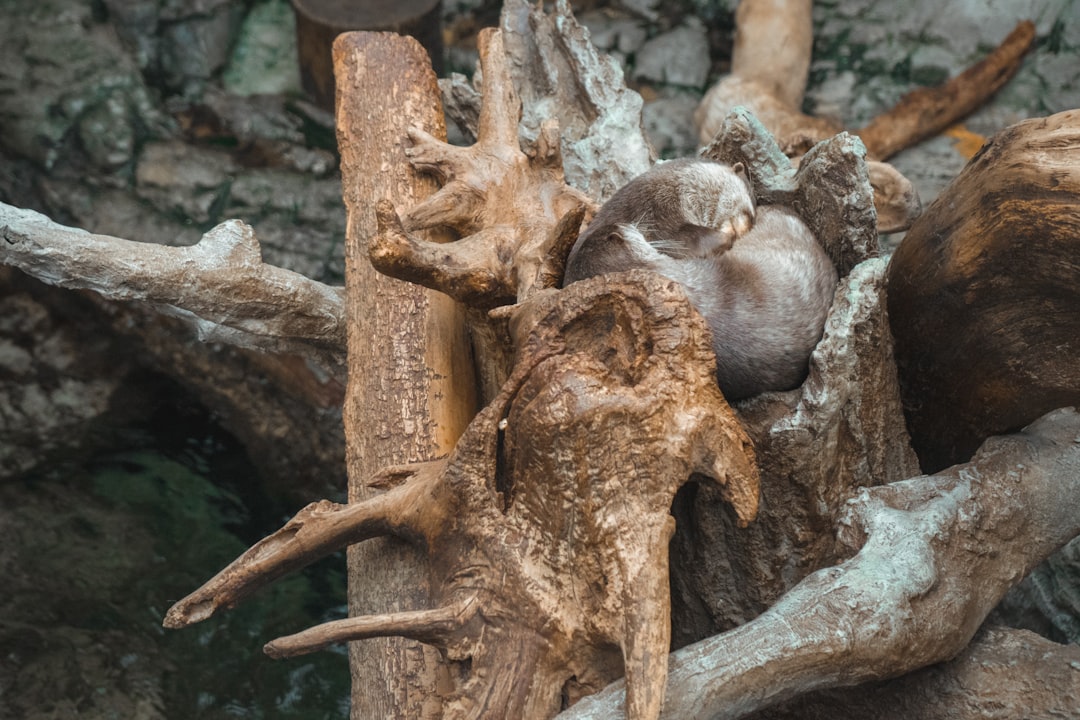
Aquascaping is the strategic process of designing an aquarium layout that mirrors the beauty and serenity found in nature. This process necessitates a delicate balance of open valleys and Zen-style design elements, all of which contribute to the overall peace and aesthetic appeal of the environment. Over time, aquarists often develop a keen eye for detail, using hardscape and plant placement to subtly guide the viewer's eye towards the focal point of the aquarium.

Base layer fertilizing substrate, such as ADA Aqua Soil Amazonia, serves a dual function within the aquarium. First, it provides essential nutrients for plant roots and second, it offers a secondary form of biological filtration. This substrate, fortified with organic acids and multi-vitamins, can help in supporting the growth of aquatic plants.
Technology has offered exciting advancements for the field of aquascaping. The introduction of equipment such as the Eheim Professional 5e 700 filter and electronic UV filter has revolutionized how aquarists maintain the health and stability of their tanks. These tools allow for enhanced control over flow, UV filtration, and CO2 levels, thereby making it easier to manage the more intricate aspects of maintaining a large-scale aquarium.

Mimicking the natural environment is a central principle in aquascaping. By fostering an environment comparable to those found in the wild, aquarists are not only able to create visually stunning aquatic ecosystems but also provide natural and comfortable habitats for the fish.
Adding final details and plants to an existing aquarium layout involves collaboration and creativity. As an example, an upcoming planting session with Viktor will highlight the importance of teamwork and innovation in developing a visually appealing aquascape.
Driftwood is critical in creating natural-looking aquascapes. Varied types like Malaysian, Mopani, and American driftwoods, each with their unique properties and textures, can be utilized to suit different aquascape designs. Properly cleaned and prepped driftwood helps maintain a healthy pH balance in the tank. Its placement needs careful planning to create a balanced look when coupled with rocks and other hardscaping materials.
For aquatic flora and fauna enthusiasts, joining a platform where they can connect, interact, discuss, and showcase their passion is a valuable resource. Such platforms offer a unique opportunity for members to share their aquascaping experiences, seek advice, and present their planted tanks, making the whole hobby a lot more enjoyable and beneficial.
It comes as no surprise that anyone who has reared fish or aquatic flora has faced brown or silica algae issues. Often spotted in new aquariums, it brings about an unpleasant look despite not posing any harm to fish. Brown algae, or diatoms, are unicellular organisms that can thrive independently or develop colonies within the aquarium environment. The unique opal-like crystalline cover formed by diatoms around their cell wall gives them the much-needed protection. But what sparks the sudden growth of these algae in your aquarium and how can you handle it? Let's dive deeper.
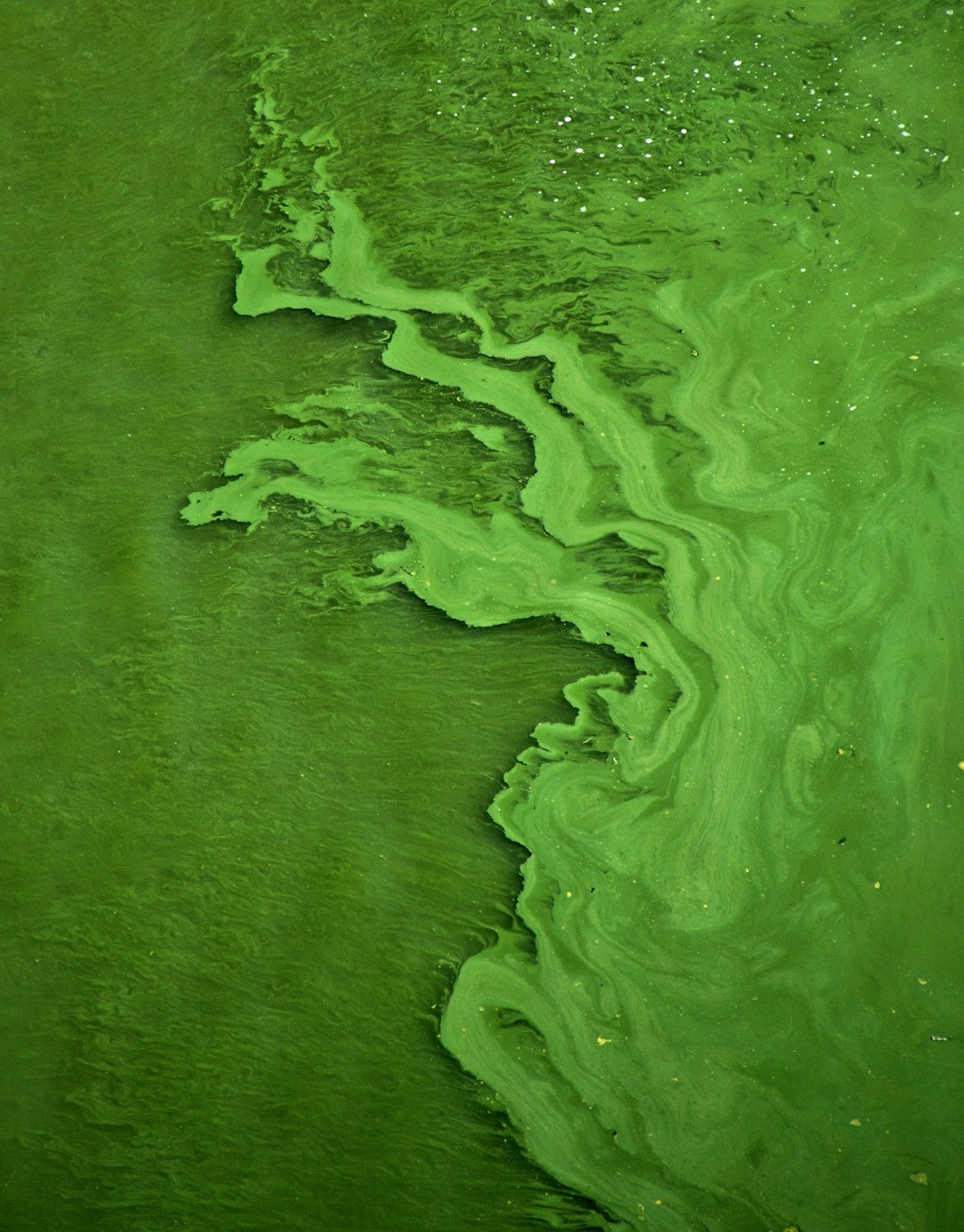
Brown Algae is caused by diatoms which can be traced back to excess silica or nitrate in the water. The culprits behind this tend to be tap water or substrate with high levels of nitrate or silica. An abundance of nutrients in new tanks might also be a contributing factor. That's why new tanks tend to exhibit brown algae growth, a phenomenon often linked to the tank's maturation cycle which normally spans four to six weeks.
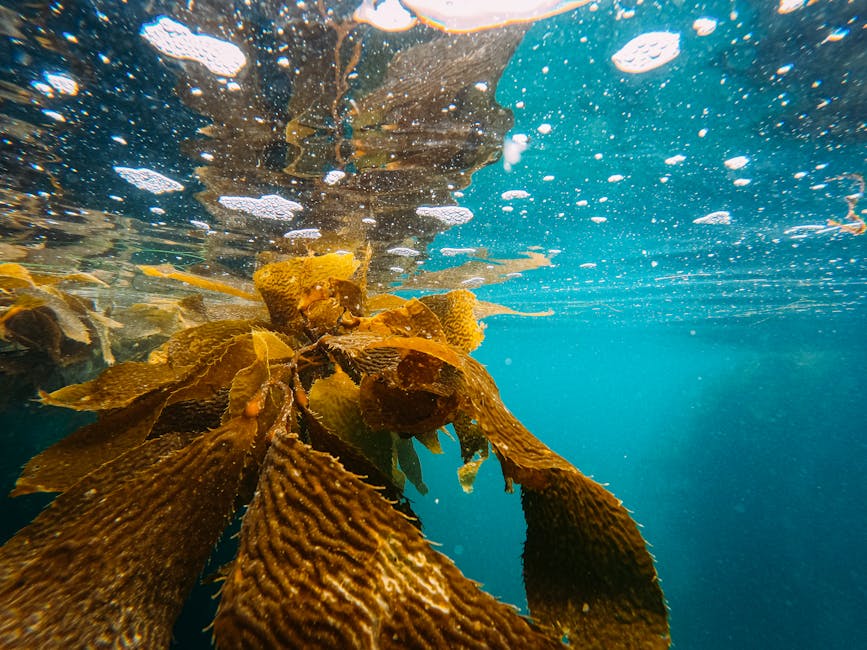
Diatoms are interesting microorganisms. They can naturally be found in freshwater and saltwater environments, utilize silica in the water for cell wall strengthening, and require light to grow. These creatures are particularly dominant in new aquarium setups that have high nitrate, phosphate, or silicate levels. Stagnant water and poor water quality could also trigger diatom growth habits leading to brown algae formation.
While brown algae pose no direct harm to fish, shrimp, or snails, they can be detrimental to aquatic plants. The algae may block plant access to light, thus hampering their photosynthesis process. The algae can also coat tank walls, decorations, and substrate, creating an unappealing look.

Eliminating brown algae from your aquarium calls for meticulous cleaning of your tank surfaces and vacuuming the gravel. In freshwater aquariums, the introduction of algae-eating fish could be a practical solution. You can also resort to manual methods such as scraping, brushing, or siphoning off the algae.
Preventing future appearances of brown algae in your aquarium largely depends on your cleaning prowess and ability to keep up with regular maintenance. Additional measures such as increasing lighting, feeding fish less, increasing water flow, adding more aquatic plants, and maintaining proper water chemistry can be impactful.
The ultimate strategy to combat and prevent brown algae lies in understanding the causes and acting appropriately. Consider adding scavengers, using phosphate and silicate removers, or filter your water with a reverse osmosis unit. Remember not to be discouraged by brown algae growth and instead employ these practical tips to control and prevent its presence in your aquarium.
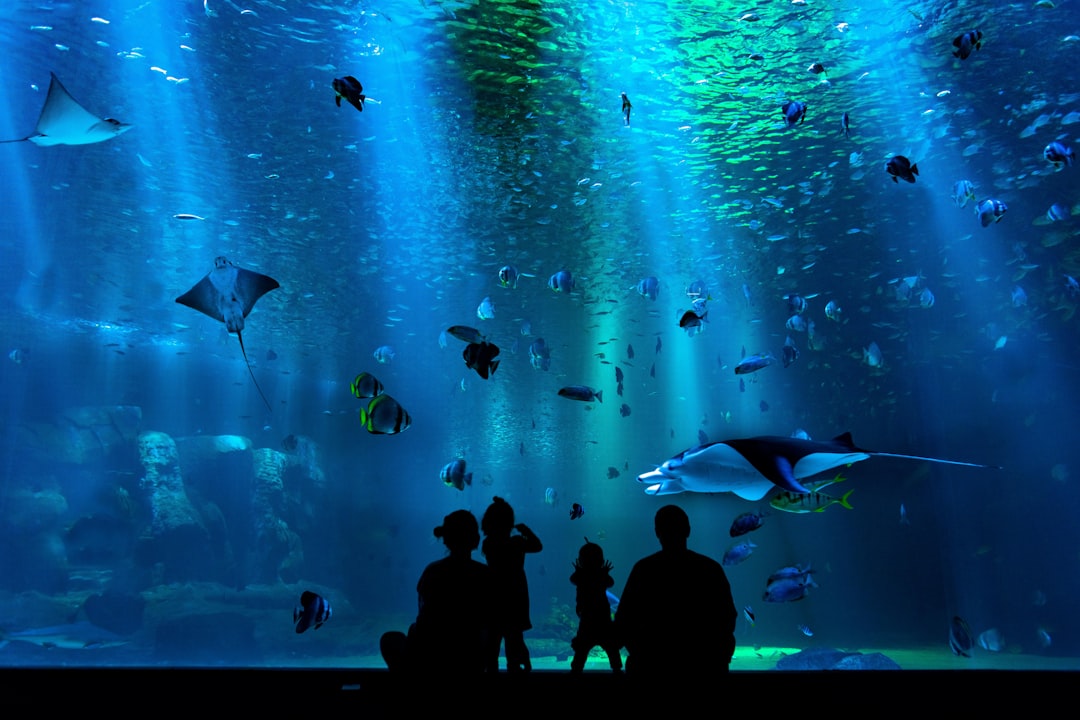
The Dutch Aquarium Aquascape dates back to the 1930s in the Netherlands and has stood the test of time, cementing its place as one of the most popular aquascaping styles till today. At the heart of this style is a focus on displaying a thriving assortment of aquatic plant life, intertwined in visually striking arrangements. Additionally, this aquascape style employs specific rules and techniques for a unique and precise aesthetic result.

The Dutch-Style Aquascape forgoes the use of traditional hardscape materials such as rocks and driftwood in favor of a lush underwater garden. The primary design techniques include terracing, high-density plant demographics, color contrast, and the strategic incorporation of focal points with large or red plants.
Plant species used in this style come with diverse aesthetics. A popular choice includes a variety of stem plants, low-growing species like the Saurus cernuus and Lobelia cardinalis, and larger aquatic varieties like the Hygrofilia corymbosa and Limnophila aquatica.
Strategic planning in Dutch-style aquascaping involves careful selection of plant species based on factors like tank size, lighting, nutrient, and CO2 dosing. Plants are categorized into foreground, midground, and background, with a vibrant plant serving as a focal point, ensuring a well-balanced layout.
Not to be left out of the captivating Dutch Aquarium setup are schools of native fish species. They complement the array of aquatic flora, and large schools of such species as Congo tetras or Angelfish are often kept in these aquaria.
Creating an effective Dutch Aquarium requires the right equipment. Standard lighting, filtration systems, CO² addition, substrate systems, and regular fertilization are integral parts of this setup. These requirements may seem complex at first but prove vital for maintaining a healthy and visually appealing aquarium.
Discipline in maintaining the Dutch Aquarium includes performing frequent plant trimming and daily tasks such as regularly adding liquid fertilizer and checking tank parameters. Weekly maintenance includes cleaning the aquarium glass and filters. This regular upkeep ensures a balanced ecosystem within the tank and an aesthetic appeal that lasts.
Several key factors are considered when judging a Dutch Aquarium in a contest. These include the health of aquatic plants and fish, water parameters, plant selection and layout, and fish selection and compatibility. Other factors that play a part include general design, initial planning of substrate, planting layout, and equipment setup.
Important techniques in Dutch Aquarium include creating strong contrast between groups of plants and leaving room for a clear distinction between plant grouping. Variation in plant heights, leaf size, and leaf shape contributes to the visually appealing outcome in the Dutch Aquascape and can influence contest outcomes.
Emphasizing lush plant growth, Dutch style aquascaping creates a vibrant and dense underwater landscape that captivates viewers with its complexity and aesthetic appeal. It is a combination of deliberate plant selection, regular maintenance, careful planning, and adherence to traditional rules and techniques that help aquarists achieve this unique style. Once mastered, the Dutch style can transform any aquarium into a thriving piece of living art, providing both a stunning visual spectacle and a rewarding hobby.
Commonly known as Boraras Petch Noi, Boraras Thai, or Boraras Red Micros, the Strawberry Rasbora (Boraras naevus) is a stunning nano fish, renowned for its ruby red coloration and petite size. This species originates from the swampy locales north of Surat Thani, Thailand and is recognized by the distinguishing large black spot in the center of its body.
Strawberry Rasboras showcase an easily noticeable shoaling behavior. They are peaceful in nature and occupy the top and middle levels of the water column in the aquatic setting. Their compatibility with other small, peaceful aquatic life forms makes them suitable tankmates for Dwarf Shrimp and other large, peaceful invertebrates.
These fish are relatively small, with an estimated size at shipping of 0.5-0.75 inches. Males display a bright ruby red coloration, especially during breeding periods. This differentiates them from the Chili Rasbora which lacks the same intensity of red coloration. It's key to understand that each Strawberry Rasbora can display variable color and shape based on factors such as sex, age, or catch location.
In the natural habitat, Strawberry Rasboras are found in swampy locations in southern Thailand which are usually laden with driftwood and thick vegetation. Recreating this environment is necessary for the well-being of these fishes. A mature and well-established aquarium with concealed spaces, ample greenery, and gentle water movement provides a conducive environment for these nano fishes.
Water quality is foremost for these delicate beauties. They do not tolerate elevated nitrates or significant swings in water chemistry. Careful acclimatization is necessary when introducing them to a new tank. The fish thrive best in a water temperature range of 20-28 °C, pH level between 5.0-7.0, and Hardness ranging between 18-179 ppm.
Strawberry Rasboras are carnivorous by diet. While they are readily accepting of high-quality dried fish food, a carnivorous diet consisting of Tubifex or bloodworms, microworms, and freeze-dried Artemia is most satisying for them. Their small mouth size requires nanosized pellets or crushed flakes, and occasional supplementation with baby brine and microworms is suggested for good health.
These fishes are continuous breeders that lay small numbers of eggs each day in densely planted aquaria. To promote breeding, a conducive environment with small frozen foods such as baby brine shrimp, mini-bloodworms, and crushed flake or micropellets is required. A separate breeding tank is recommended where conditions suitable for the tiny fry can be created.
Strawberry Rasboras are primarily sourced through importers and wholesalers, with prices starting at $7.99. It is suggested to plan orders in multiples of the pack size to avoid potential cancellation due to supply disruptions.
In addition to offering a 100% Live Arrival Guarantee, several online retailers limit shipping to domestic locations and avoid weekends to ensure the safety of the fish. Processing times may vary between 1 to 3 working days.
Hopefully, this guide has provided you with a comprehensive understanding of the vibrant Strawberry Rasbora. If you have kept this beautiful species in your own home aquarium, please share your experience in the comments below. Doing so will not only enrich this guide but also help prospective aquarists in their decision-making.
Commonly known as Dwarf Baby Tears or HC, Hemianthus Callitrichoides takes the trophy as one of the tiniest aquarium plants out there. Scarcely clocking in at millimetre-sized, its round leaves set a scenic stage that nestles just above the gravel — a gleaming green landscape that adds a pop of colour to any aquarium. This dainty plant, native to Cuba, is also one of the most attractive foreground plants, popular among small aquarium keepers.
The courting of this petite plant requires careful handling and specific conditions. Required for this tiny gem to bloom are enough light, an abundance of CO2, ideal water circulation, and a healthy serving of fertilizer. Misstep on these stipulations and you may find your HC struggling to keep up, with its vibrant carpet fading into oblivion.
If keeping up with the precise needs of Hemianthus callitrichoides seems a bit too daunting, you might consider the Micranthemum ‘Monte-Carlo’. Also a foreground plant, this slightly less demanding alternative can provide much of the same effervescence that HC does, even when the conditions are a little less than perfect.
When it comes to planting your HC, proceed with a measured hand. Small clumps, spaced a few centimetres apart, will allow the plant to spread rapidly, carpeting the bottom of your aquarium in no time. Overhead, small pearls, or bubbles of oxygen generated by the plant, bob on the water surface, adding a subtle vivacity to the landscape.
While regular trimming will keep your carpet looking fresh, doing so also ensures that the lower parts of the plant receive enough light. This is crucial in preventing root death. The ideal cultivation temperature for an HC Cuba plant is below 26 degrees Celsius. Any fluctuations could lead to impediments in the growth of the plant.
This tiny but mighty plant can trace its roots back to Cuba, where it was first collected west of Havana. The plant grows faster than its alternative, the Monte Carlo, but requires more frequent trimming. Tissue culture HC can be sensitive to ammonia/raw new aquasoils, so it's recommended to pre-cycle the tank before planting.
Whether you're a seasoned aquarium enthusiast or a newcomer to the aquatic plant world, the Hemianthus Callitrichoides is a plant that will not disappoint. Its bright green carpet can transform your aquarium into a lush paradise that mimics nature. Though it may require special attention and regular maintenance, the end result will be a natural masterpiece that brings you joy every time you look at your aquarium.
Rooted deeply in Japanese aesthetics, the Iwagumi layout style offers aquascapers the distinct challenge of integrating simplicity and tranquillity into their aquarium landscapes. Despite its seemingly minimalist design, perfecting an Iwagumi aquascape is anything but simple. This article aims to breakdown the design principles, plant selection, fish species, and practical challenges of implementing and maintaining an Iwagumi style layout.
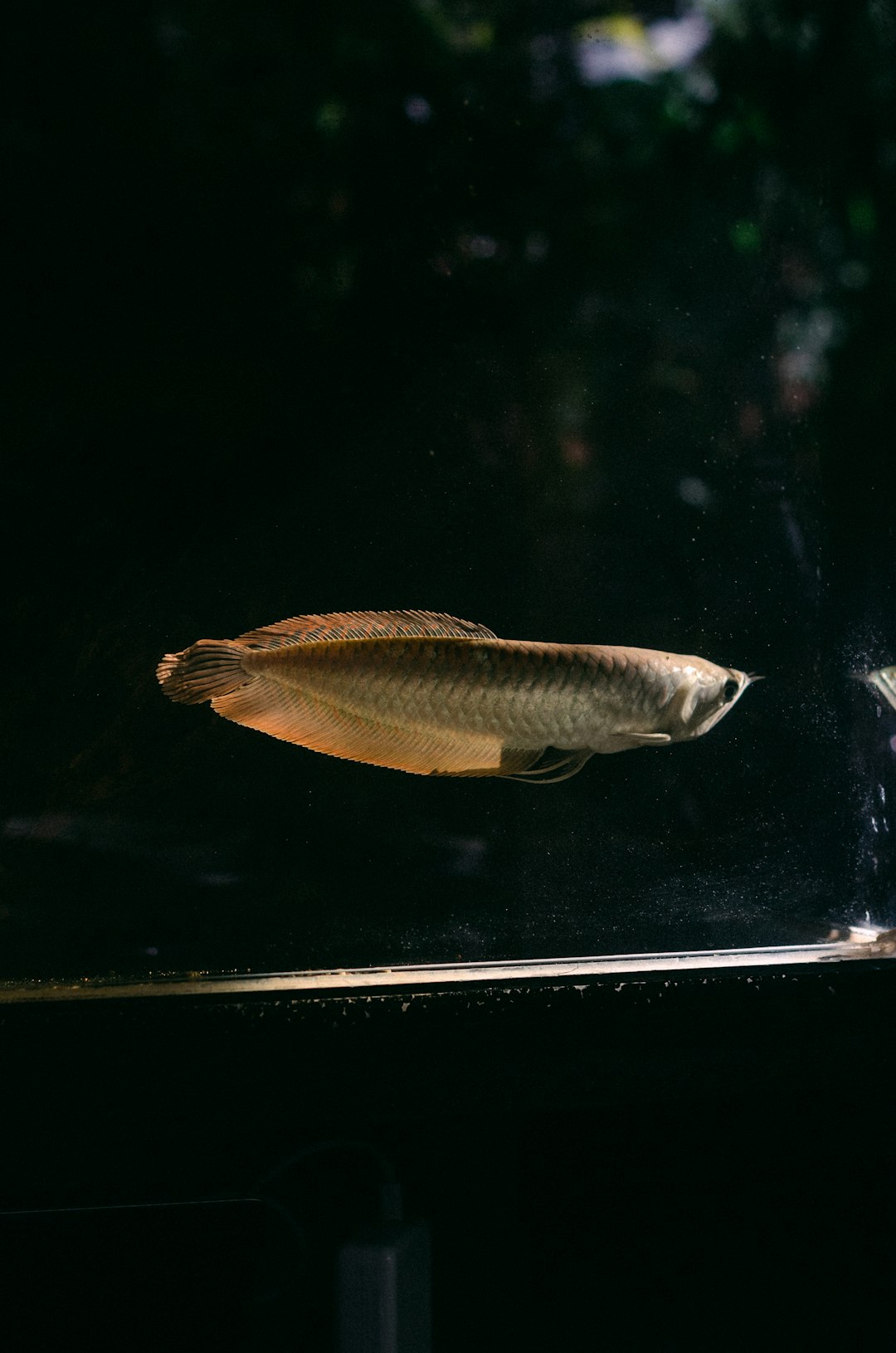
The concept of Iwagumi layout in aquascaping was conceived by none other than Takashi Amano, whose appreciation for Japanese culture and love for nature can be seen reflected in his work. Heavily inspired by the ancient rock gardens of Japan and China, the Iwagumi style is seen as a challenging yet rewarding venture for aquascapers around the world.
The Iwagumi aquascape is centred around the idea of creating a dynamic and natural rock formation with masterful design principles. Arranging rocks of different sizes, role-centric positions, and expressive textures, plays an integral role in this aquascaping style. The main types of rocks used in an Iwagumi layout design are Oyaishi (the largest stone), Fukuishi (secondary stones), Soeishi (optional complementary stones) and Suteishi (smaller detail stones).
Using inert, aquarium-friendly rocks like Seiryu Stone, Ryuoh Stone, Ohko Dragon Stone, Elephant Skin Stone, and Lava Rock are popular choices for an Iwagumi layout. The rocks should be visually uniform, and scrubbed clean to reveal their true colour. Considering the golden ratio and the rule of thirds is paramount to achieving a visually pleasing rock formation.
Purism in the Iwagumi style can be seen in its constrictive plant palette. The aquascape is typically adorned by a limited selection of low laying carpet flora like Glossostigma elatinoides, Micranthemum sp., Utricularia graminifolia or grassy types, to maintain focus on the rocks. The aim is to create a contrast between the vibrant green hues of the plants and the muted colours of the stones.
To ensure lush carpeting in your Iwagumi layout, the plants must be carefully propagated using proper trimming techniques. Products like ADA Soft Water, Cation Filter, Green Brighty Iron, and ECA Plus can assist in promoting plant growth and maintaining a captivating leaf color. Constant monitoring of water temperature, CO2 levels, and nutrient uptake is vital to plant survival.
The potential inhabitants for an Iwagumi tank includes small, not-too-hectic fish species to continue the theme of tranquillity. Fish species such as Cardinal and Rummy nose tetras can enhance the aquascape's peaceful aura. The addition of Otocinclus Algae Eaters and Amano Shrimp can not only contribute to the ecosystem but also keep the tank clean.
Although minimalist at a glance, the Iwagumi style is laden with challenges. From locating matching stones to combating algae formation, this aquascaping style is an ongoing test of competency and patience. However, overcoming these hurdles can result in an immersive display of nature's beauty. In the end, the unique experience of watching your Iwagumi aquascape mature over time is rewarding in itself.
Creating a compelling Iwagumi aquascape can seem daunting at first. However, with a clear understanding of the aesthetic principles, plant arrangement, and fish selection, you can master this challenging aquascaping style. Remember, the key to success in any aquascaping style is patience, attention to detail, and a willingness to learn from mistakes. We hope this guide helps you on your journey to creating an eye-catching Iwagumi aquascape.
Just like terrestrial gardening, but under water, aquascaping combines natural elements to form aesthetically pleasing landscapes. Over the years, this captivating practice has evolved into a revered art form, winning hearts through its blend of creativity and science.

The key tenets that guide an aquascaper include simplicity, variety, proportion, and persistence. Only through meticulous trial and error, involving deconstruction and reconstruction, can one create a balanced aquascape that resonates with nature's symmetry and diversity.
Successful aquascaping hinges upon mastery over various technical elements, like aquarium filters, CO2 systems, lighting, and fertilizers. Natural components such as hardscape materials and substrates also play crucial roles in fostering the growth of aquascape plants, thus contributing to the overall harmony of the underwater environment.
Mathematical principles like the rule of thirds and the golden ratio form the foundation of aquascaping design, offering a well-balanced and visually compelling outcome. Focal points and the creation of depth and perspective too contribute significantly in bringing life to an aquascape.
Design styles such as the Dutch Aquarium, Iwagumi, Nature Aquarium, Jungle style, etc. each offer a unique approach to aquascaping, varying in plant arrangement techniques and hard material usage.
While technical knowledge forms the heart of a successful aquascape, the soul lies in the aquascaper's imagination. Few key considerations for crafting a captivating aquascape include avoiding symmetry, creating smooth curves, using a background complementing the foreground and midground, and choosing plants of varied colorations and sizes for a lifelike effect.
Just like choosing the right plants, selection of fish too requires due consideration. For example, their breeding cycles, swimming habits, and behavior must be compatible with the aquascape's design.
An aquascape demands more than just inherent talent. It requires the right equipment, like high-quality tanks, filters, heaters, and timers to successfully set-up and maintain the aquascape.
Understanding and maintaining optimal water conditions like pH, GH, KH, and TDS contribute immensely to the success of a planted tank. Therefore, researching the preferred parameters for chosen livestock is key.
Surface agitation aids in oxygen exchange in the tank, preventing biofilm buildup. Injecting CO2 is also a crucial process for plant growth in aquascaping, primarily supporting photosynthesis.
Every plant offers unique requirements and growth rates. Avoiding common mistakes like burying the rhizome of epiphytic plants and making sure the plants are truly aquatic can help in crafting a beautiful aquascape.
Beyond creating aesthetically pleasing underwater landscapes, aquascaping offers enthusiasts a chance to participate in contests, trade plants, and share experiences online. So whether you are a beginner or an experienced hobbyist, explore this wonderful world of aquascaping and immerse yourself in this engaging hobby.
Formerly known as Echinodorus tenellus, Helanthium Tenellum is a robust and attractive aquatic plant that boasts of carpet-creating propensity and low maintenance requirements. Standing at a height of 2-3 inches and requiring an optimal pH of 6.5-7.5, it has become a favourite amongst aquarium enthusiasts due to its refreshing green hue, even under intense lighting levels.
Superior to its more common variety, the reddish Echinodorus tenellus, Helanthium Tenellum's universal appeal lies in its striking coloration and grass-like texture. This hardy species requires nutrient-rich soil to flourish optimally and can cover the foreground of an aquarium in an aesthetically pleasing manner.
Helanthium Tenellum belongs to the Haloragaceae family and originates from North America. It was originally classified as Echinodorus tenellus but has been classified in recent times as a Helanthium species. The plant can be located in North, Central, and South America, where it showcases variations in leaf shapes and sizes.
This aquatic plant can be planted using a variety of methods. One popular method involves tissue culture plants. These plants are grown in vitro and are completely free from unwanted pests and algae, making them a great choice for hobbyists looking for unsoiled planting options.
Mindful planting requires following relevant guidelines to ensure successful growth. It is recommended to separate larger mats into small portions before planting them in the substrate. Regular trimming will be needed once the plant is established. Also, CO2 injection and quality aquarium soil are advocated for enhanced growth.
Understanding the handling time for Live Plants and Live Animals orders is vital for customers. Live plants are usually dispatched via USPS from Monday to Saturday, and most orders are shipped out within 1-3 business days. To ensure plants arrive within the same week, UPS 2-Days and UPS Overnight only dispatch from Monday through to Wednesday with a handling time of 1-2 business days.
Another essential factor to consider during delivery is the geographical location of the recipient. Alas, free shipping is not extended to customers in Alaska, Hawaii, Puerto Rico, Guam, and the US Virgin Islands; they should consider upgrading to Expedited or Express Mail for faster delivery.
Bearing in mind how crucial it is to maintain stable aquarium parameters to prevent the melt and rotting of the plant, Helanthium Tenellum promises a rewarding experience for every aquarium enthusiast due to its stunning aesthetics, low maintenance, easy to moderate care level, and moderate to fast growth rate.

Under the fish family Loricariidae, dwells a unique armored catfish - Pterygoplichthys multiradiatus, also known as Orinoco sailfin catfish or plecostomus. This large pleco is known to grow up to a whopping 50.0 centimeters and thrive best in warm freshwater environments.
They survive on a diet of benthic algae, aquatic weeds, worms, insect larvae, and other bottom-dwelling invertebrates. Unfortunately, this species has wreaked havoc as an invasive species in various locations like Taiwan, Puerto Rico, Florida, Hawaii, Texas, India, and Mexico primarily due to escapes or releases from aquarium fish farms. They are known to compete against native species, cause damage to fishing gear, and disrupt environments with their burrowing activities.
P. multiradiatus is best kept in large tanks equipped with numerous rocks and driftwood for hiding. They are relatively peaceful and harmonize well with cichlids and other large fish in aquarium settings. Sometimes referred to as "long-fin armored catfish", "sailfin catfish", "sailfish catfish", and "many-rayed pleco", they truly are an interesting species to explore.
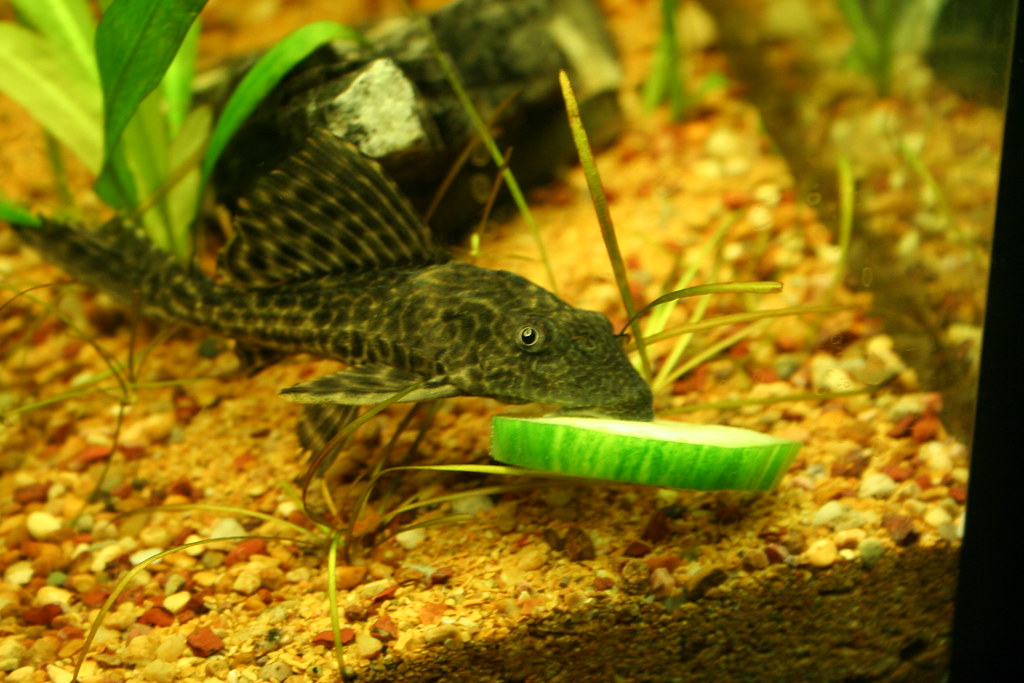
Found in Ecuador, Peru, Brazil, and Venezuela in the Oronoco and Amazon River basins, the sailfin pleco is an armored sucker mouth catfish that wins hearts with its appearance and behavior. They have an affinity for slower-moving rivers, flooded zones in the rainy season, and muddy riverbanks during the dry season.
Displaying a combination of territorial males and peaceful nature, these fish grow to around 20 inches in length. They are omnivorous feeders that relish plant matter, sinking sticks, discs, wafers, and even enjoy a weekly treat of fresh or blanched zucchini or cucumber. Larger fish such as anostomids, cichlids, and caricans make ideal tank mates due to their territorial nature.
An ideal tank setup for a sailfin pleco includes at least 100 gallons of water, long and wide tanks, strong filtration to handle their excessive waste production, and regular water changes. Water conditions should include strong filters, mid-level to subdued lighting, a pH range of 6.5-7.5, carbonate hardness of 5-10 degrees, and temperature range of 75-85 degrees Fahrenheit.
Renowned for their remarkable resilience and algae eradication skills, Leopard Sailfin Plecos are a terrific addition to any community. They are best kept with their kin from an early stage, as they can turn territorial and aggressive towards each other. The adults thrive in spacious environments with wood incorporated for digestion and algae growth. As they are nocturnal, it is advisable to feed them supplemental foods in the evening.
The Leopard Sailfin Plecos are adorned with a stunning dorsal fin that can grow several inches high, adding to their charm. They are distinguished by their dorsal fin ray count and dense pattern of spots covering their bodies. Their coloration is predominantly pale orange with dark brown spots, with contrast variations contributing to their unique and striking look.
Large freshwater catfish found primarily in South America, the Sailfin Plecos, are recognized for their interesting appearance and peaceful nature. They are fond of slow-moving and murky waters, typically housing in the Amazon and Orinoco rivers. Sailfin Plecos are known to grow between 13 to 19 inches in length when fully grown, and can survive up to 15 to 20 years in captivity.
Key care requirements for these plecos include a tank of at least 100 gallons, stable water parameters, suitable substrate, driftwood for constructive hiding, and hearty servings of algae wafers. These Plecos are low-maintenance and rewarding, having the potential to form a bond with their owners.
Popularly known as the Gibbiceps Pleco, Leopard Pleco, and Pterygoplichthys Gibbiceps, the Black Gibbiceps Pleco is a splendid species of armored catfish native to Brazil, South America. The ideal temperature for them ranges between 72-85F, with a pH of 6.5 to 8.5.
Adorned with excellent omnivorous feeding habits, the Black Gibbiceps Plecos are recognized to attain a length of around 50 centimeters and can live for more than 20 years. These species are great tank cleaners helping with algae control and dirt reduction. They are also good companions for more aggressive fish, hence a wonderful addition to larger tanks.
Touted as one of the most popular cichlids among aquarium hobbyists, the Aequidens Diadema, also known as the Royal Acara Cichlid, offers an intriguing blend of enticing qualities such as its vibrant colors, calm demeanor, and striking length of around 20 centimeters. Originally stemming from places like Rio Negro, Brazil, and Venezuela, the Royal Acara Cichlid now graces home aquariums worldwide. Let’s dive more into their habitat, care, and breeding process.

Creating an environment that mirrors their natural habitat is crucial for the Royal Acara Cichlid's overall health and wellbeing. This implies incorporating a tank of at least 1.80 meters in length. Indeed, these cichlids appreciate roomy spaces, tucked with various hiding options like driftwood, sturdy plants, and rocks. As for the substrate, sand or fine gravel makes an excellent choice.
Maintaining a consistent water parameter plays a fundamental role in ensuring this species thrives. The temperature should fall between 23-28 Celsius, the pH between 7-7.5, and the GH between 8-12. These cichlids come from areas with slightly acidic and black water, particularly in moving streams with a high oxygen content.
The Royal Acara Cichlid is an omnivorous species, necessitating a balanced diet inclusive of protein-rich live or frozen food. This well-rounded diet ensures proper health maintenance and a longer lifespan.
Known for their relatively calm and peaceful nature, Aequidens diadema can coexist beautifully with other peaceful fish species. They are territorial creatures and form territories, especially when spawning. Hence, they can be best kept as a pair. Ideal tank mates include medium-sized tetras from a similar habitat and water type, and corydoras catfish.
Breeding the Royal Acara Cichlid can be a simple process with proper care and conditions. Eggs are laid on a flat stone, after which they are taken into the mouth of both parents for further hatching. Once hatched, the fry can be nourished with brine shrimp nauplii.
The current price for these magnificent cichlids is $34.99 with 11 items in stock currently. The item location is in Wyoming, United States, and the seller provides shipping options at checkout with a special inclusion of heat or cold packs as needed, free of any extra cost. Specific UPS Next Day shipping options are also available, with prices varying based on the number of items being shipped.
The Aequidens diadema 'Rio Nanay' is a subspecies from Peru. This cichlid, usually reaching a length of 4-6 inches, is a peaceful species suitable for medium to large semi-aggressive communities. The subadult cichlids of this variety, around 2.5-3 inches long, are in their early growth stages, so they offer yet to fully exhibit their golden and blue hues.
Aequidens diadema, with its vibrant colors and peaceful nature, is a must-have for any aquarium hobbyist. By maintaining the required aquarium conditions, balanced diet, and compatible tank mates, you can ensure a healthy environment for these beautiful cichlids.